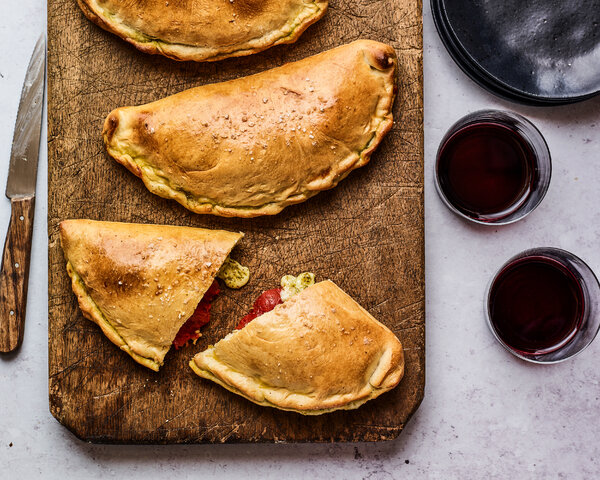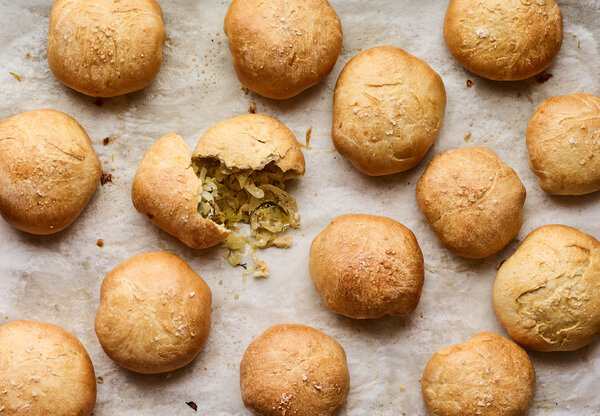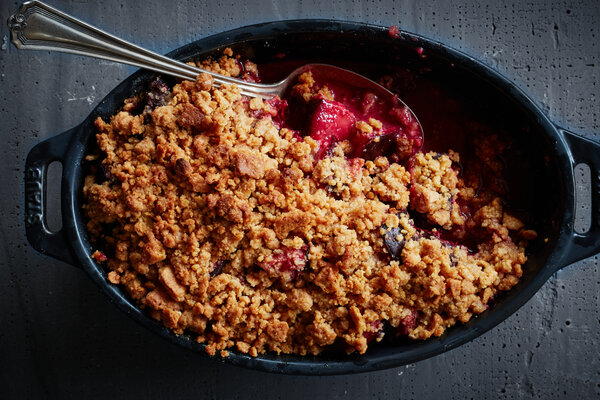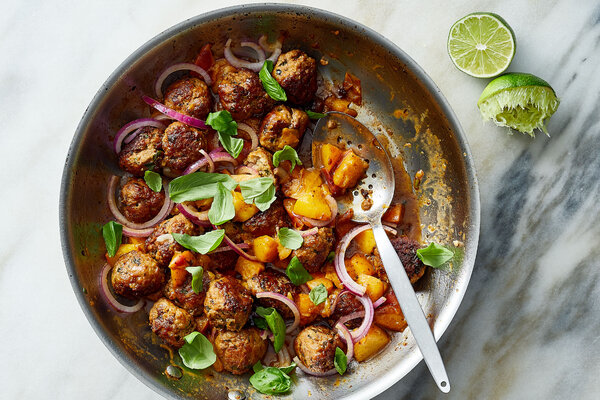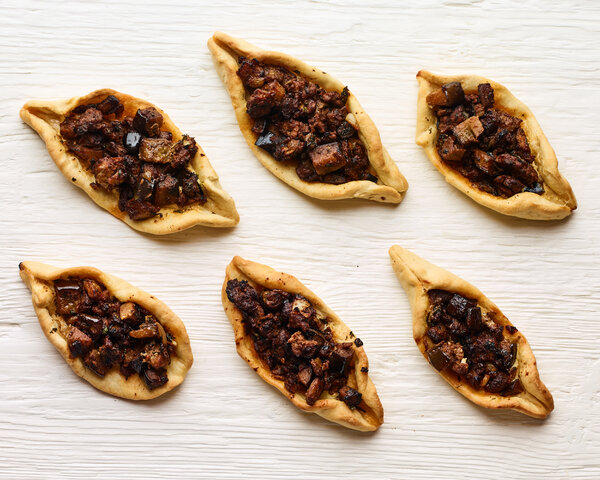
Ingredients
⅔
cup/150 grams sourdough starter
1 ¼
cups/300 grams room temperature water (see Tip)
2
tablespoons honey
1
tablespoon extra-virgin olive oil
4
cups/525 grams unbleached all-purpose flour, plus more for dusting
1 ½
teaspoons fine sea salt
Polenta or coarse cornmeal, for dusting
Neutral oil, for greasing
Preparation
- The morning before you want to enjoy your English muffins, prepare your dough: In a large measuring cup or medium bowl, whisk together starter, water, honey and oil.
- Select a container or bowl that will hold at least 3 quarts, as this dough will grow 3 to 4 times in size. Add the flour and salt to it, making a well in the center. Pour the liquid mixture into the well and stir with your hands, clawing the mixture and flipping it occasionally until no flour streaks remain, and you are left with a dense, shaggy, wet ball. Scrape the bowl as needed to integrate sneaky flour pockets.
- Cover loosely with a lid or inverted plate. Tuck in a warm, draft-free place and allow it to nearly quadruple in volume over the next 8 to 12 hours.
- Dust a work surface heavily with flour. Prepare a large baking sheet by coating it with a light dusting of polenta, followed by a dusting of flour.
- Deflate the dough by scraping it down in the bowl with a spatula. Transfer the dough to the dusted work surface. (Do not dust the surface of your dough, as you want it to stick to itself.) Using a bowl scraper, bench knife or lightly floured hands, pick up the dough from underneath, stretch and fold it like a business letter: bottom third up to the middle, top third down. Using the bowl scraper, flip your dough onto the prepared baking sheet so the folded side is now the underside.
- Lightly flour the top surface of your dough, then grease a rolling pin with neutral oil and roll your dough out to 1/2-inch thick, using additional oil on the pin if the dough begins to stick.
- Press a piece of plastic wrap onto the surface and tuck it around the edges of the dough to prevent it from drying out. Refrigerate the dough for at least 4 hours, or up to overnight for a more pronounced sour flavor.
- When ready to cook, heat your largest cast-iron pan over medium-low and lightly grease with neutral oil.
- Remove dough from the fridge, peel away plastic, lightly flour the surface of the dough and gently brush the flour to distribute evenly. Using a greased 4-inch ring cutter (or the ring top of a large Mason jar), cut the dough into muffins.
- Place as many muffins as you can fit along the edges of your cast-iron pan (avoiding the hot center of the pan), puffy-side up. In between batches, refrigerate any muffins you are not cooking.
- Cook undisturbed, for 6 to 8 minutes or until visibly puffed and matte like a very fluffy pancake. Once they are visibly golden on the bottom — you can take a peek — flip them and lightly press so they make full contact with the pan, then continue to cook for an additional 5 to 7 minutes until golden. It helps to give them a gentle 180-degree turn midway through cooking.
- Transfer cooked, hot muffins to a large plastic freezer bag or sealed container and seal to steam a bit to finish. (Steaming helps make the outer crust soft and chewy.)
- Wipe the pan dry and re-grease lightly as before. Continue cooking, transferring finished muffins to the plastic bag.
- When fully cool, about 1 hour, remove muffins and pierce each around the middle with a fork to perforate. When ready to eat, peel muffins apart, toast and slather with butter. Store remaining muffins in a separate bag or resealable container in the refrigerator. These are best enjoyed fresh, but can be refrigerated for 2 to 3 days, then toasted.

